Inspired by Nixie watches (like the original from cathode corner, or this other one), I thought it would be nice to make a watch with neon indicator lamps. This blogpost shows the result. (Ook in het Nederlands beschikbaar)
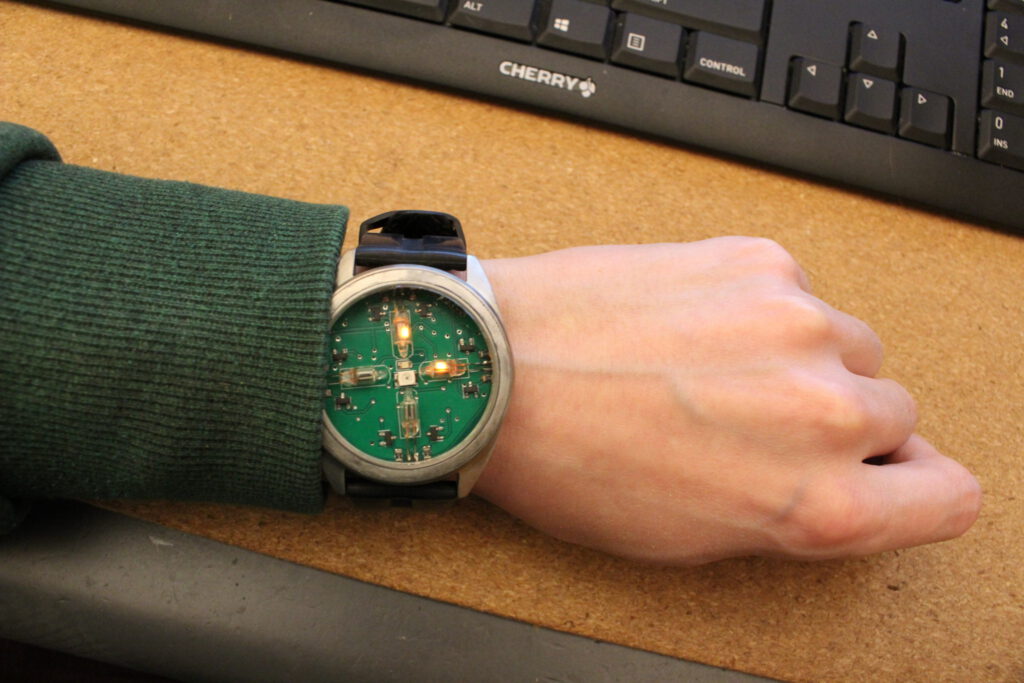
The neon lamps are off most of the time, to save on battery (so it lasts a few days instead of hours). A light sensor1 is used to detect when the time needs to be displayed: By waving a hand above the watch, the lamps switch on and the time is shown2.
The watch displays hours and minutes separately, one after the other. The point closest to where the clock hands would be lights up. Because both electrodes of the indicator lamps are used independently, 4 lamps can be used to indicate 8 points.
In the above video it is half past two. This PDF explains how to read the clock.
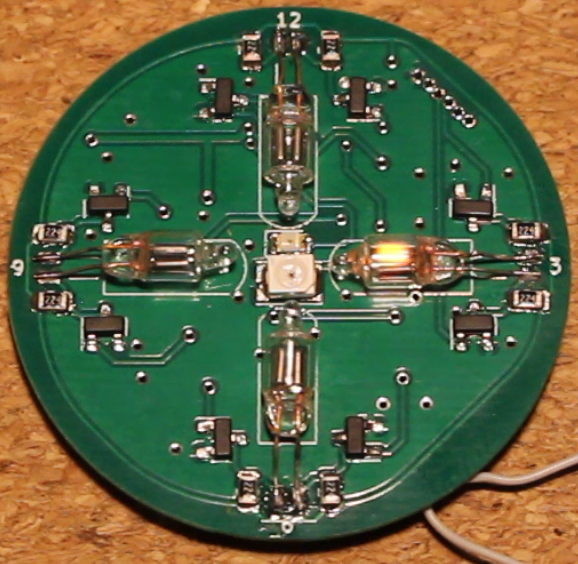
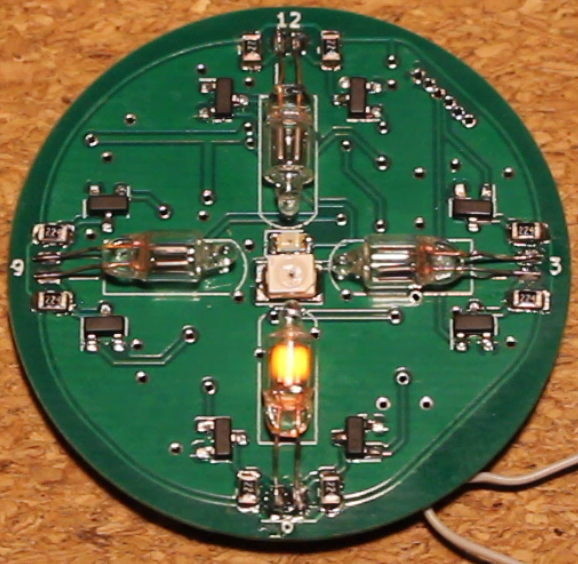
After turning the watch on, it is set to the correct time by a computer program that flashes the screen to send the time. The light sensor on the watch is used to receive the time. The time this transmission takes is compensated for before transmission, so the watch is accurate.
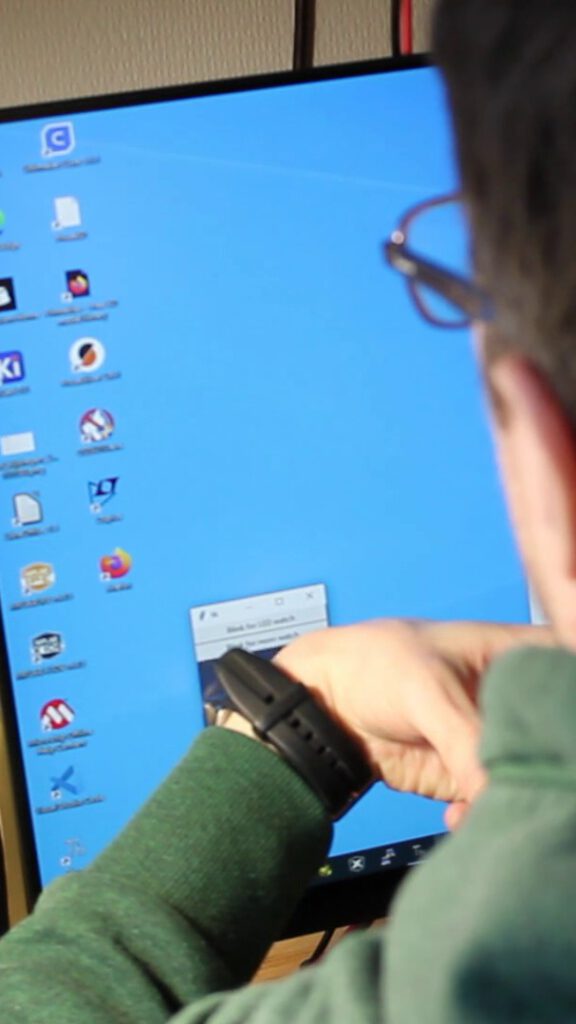
The watch battery is rechargeable, but to recharge it the circuit board needs to be removed from the watch casing. So it is a watch for special occasions, not for daily use. The battery lasts about 4 days3 before it needs to be recharged.
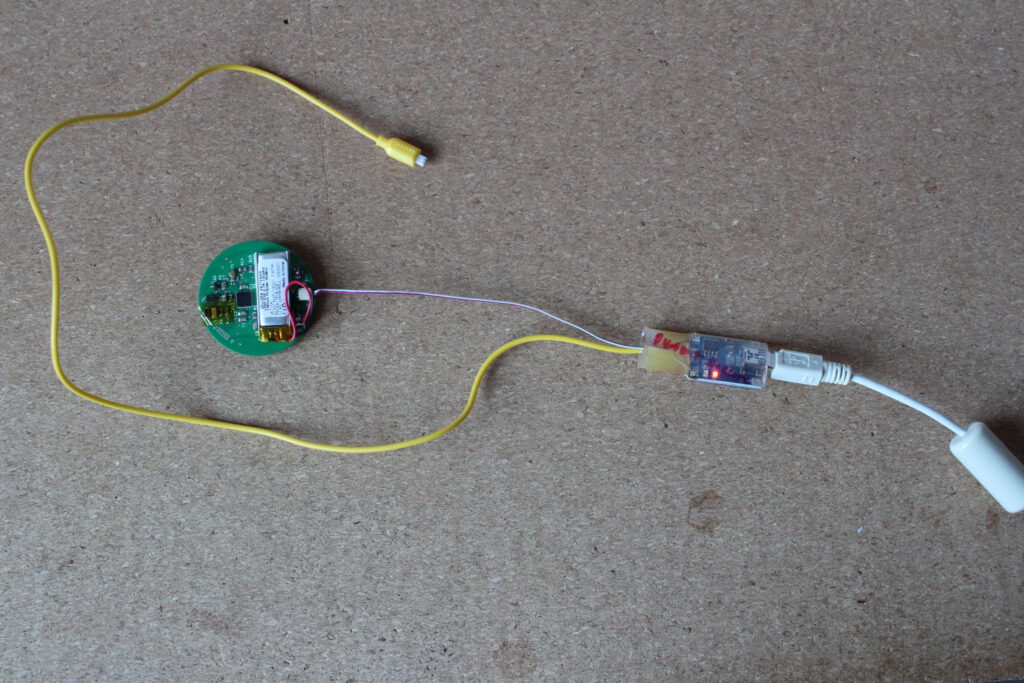
The trick to fitting neon lamps in a watch case is to use the smallest possible neon lamps in the largest possible watch case4. The case has a total inner ‘depth’ of 9 mm so in order to fit the electronics need to be slimmer.
The lamps have a 4 mm diameter, so these are the biggest component on the front of the board. The battery is the thickest component on the back of the board, also 4 mm. So for the board itself a thickness of 1 mm or less is needed. So instead of the standard 1.6 mm a special 0.8 mm thick board is used.
The circuit board diameter is 40 mm. The watch casing has a little over 40 mm inner diameter for the first 7 mm height and 34.5 mm diameter for the last 2 mm just below the glass.
So it all fits nicely.
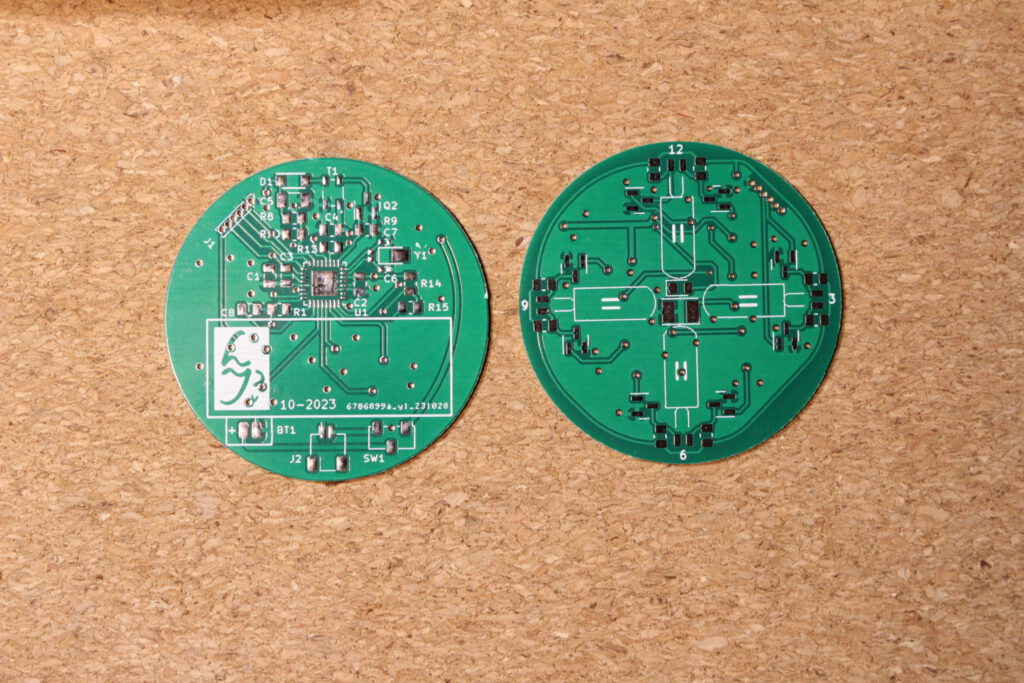
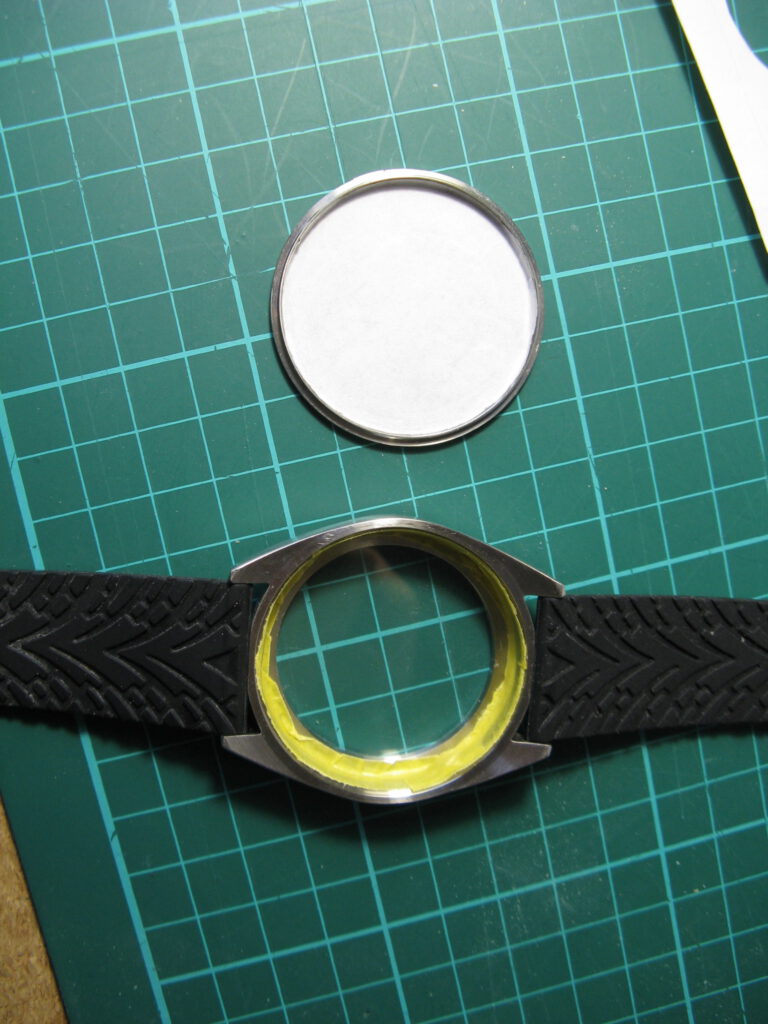
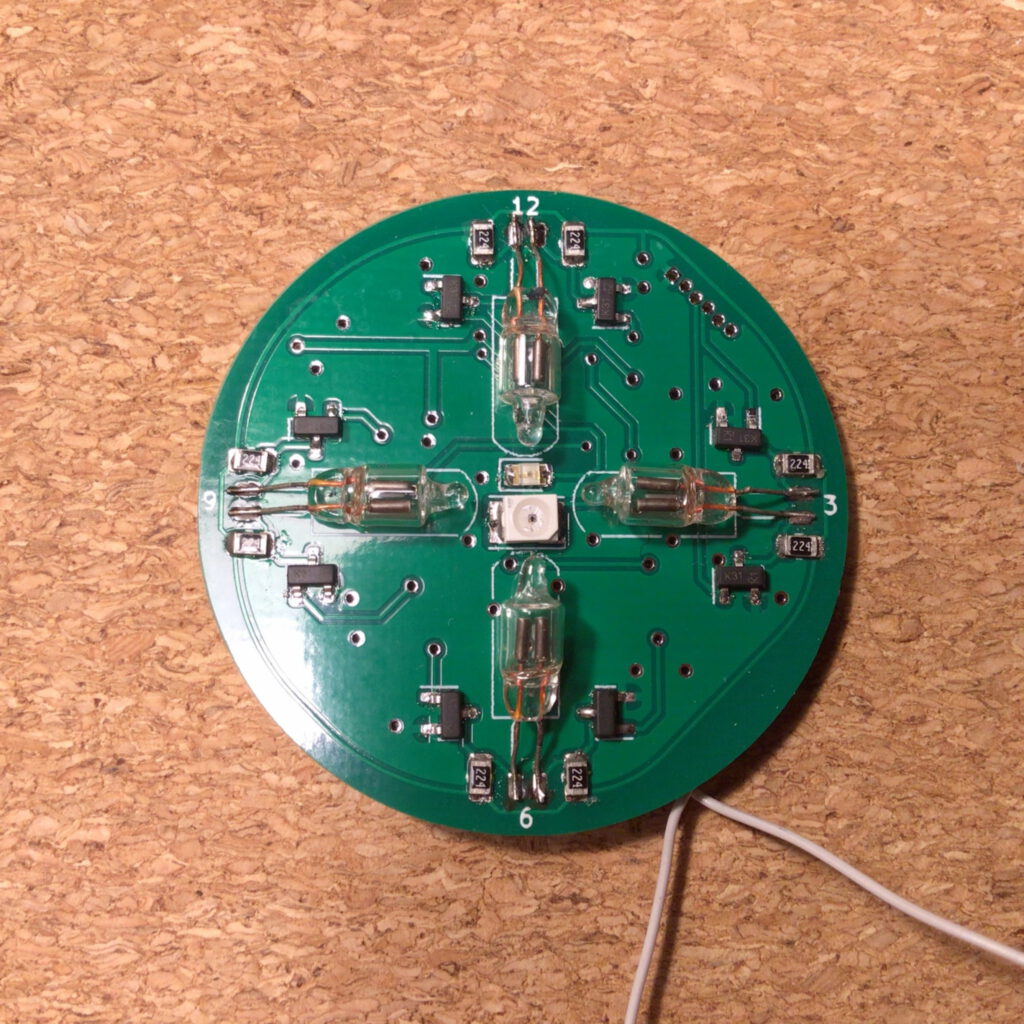
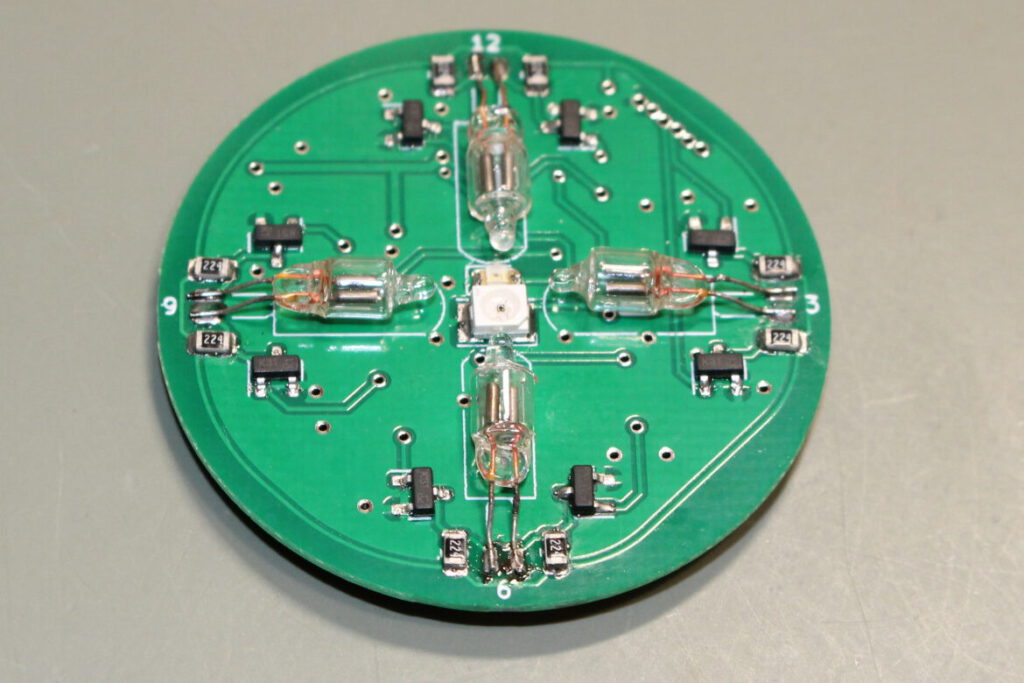
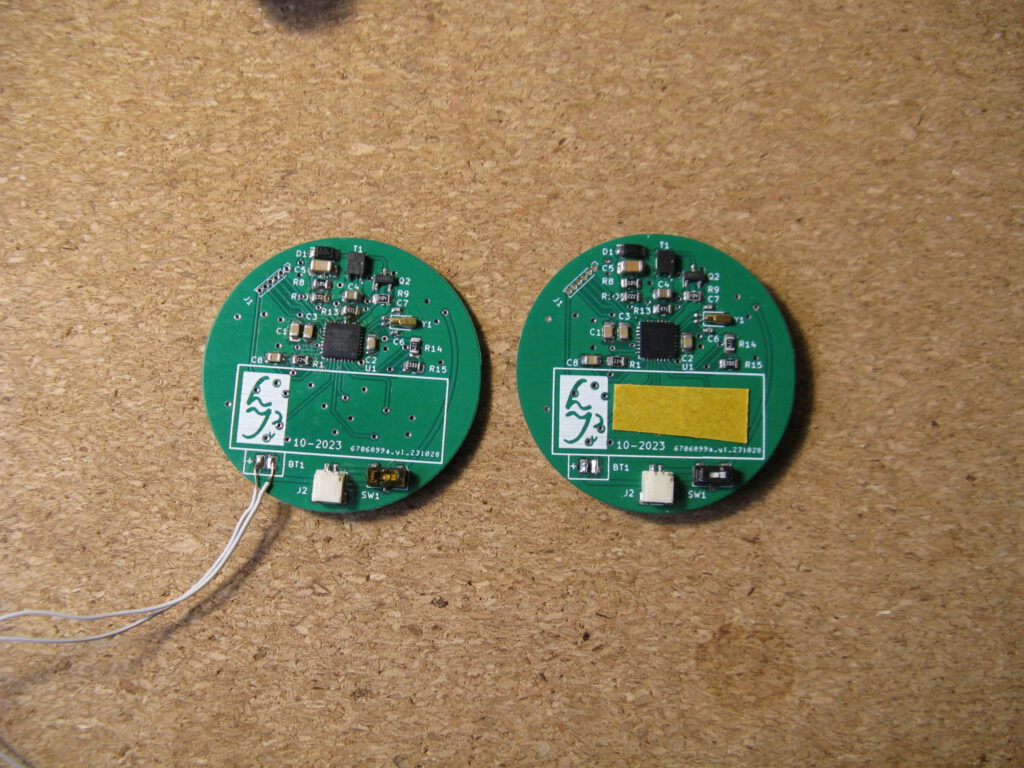
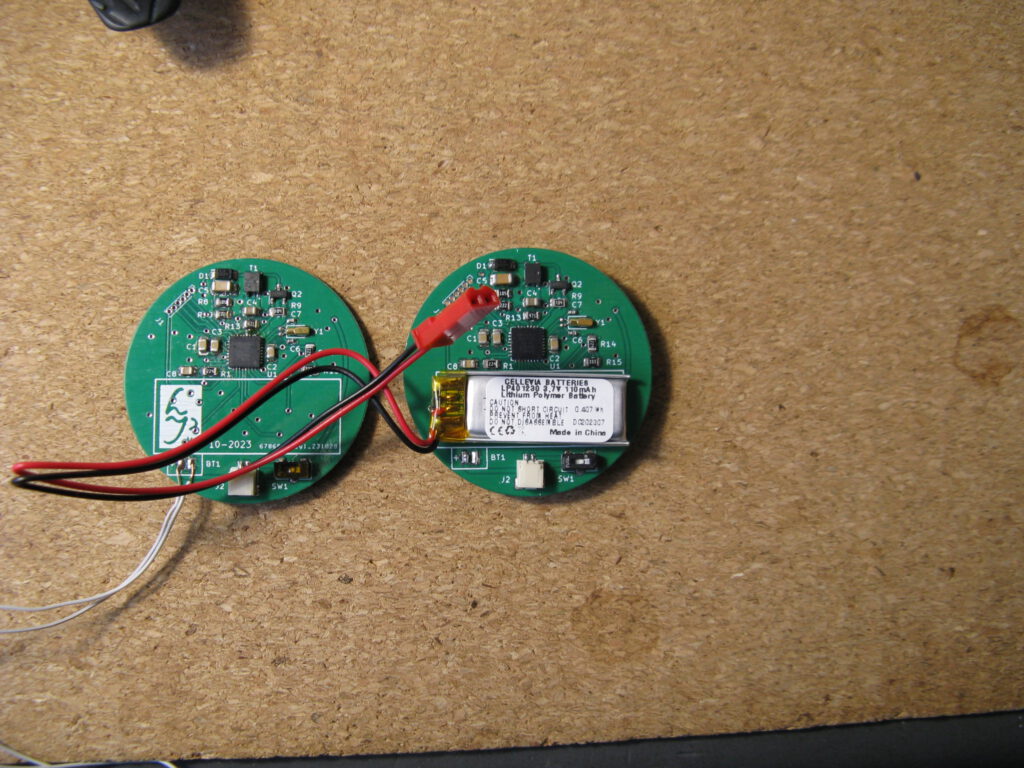
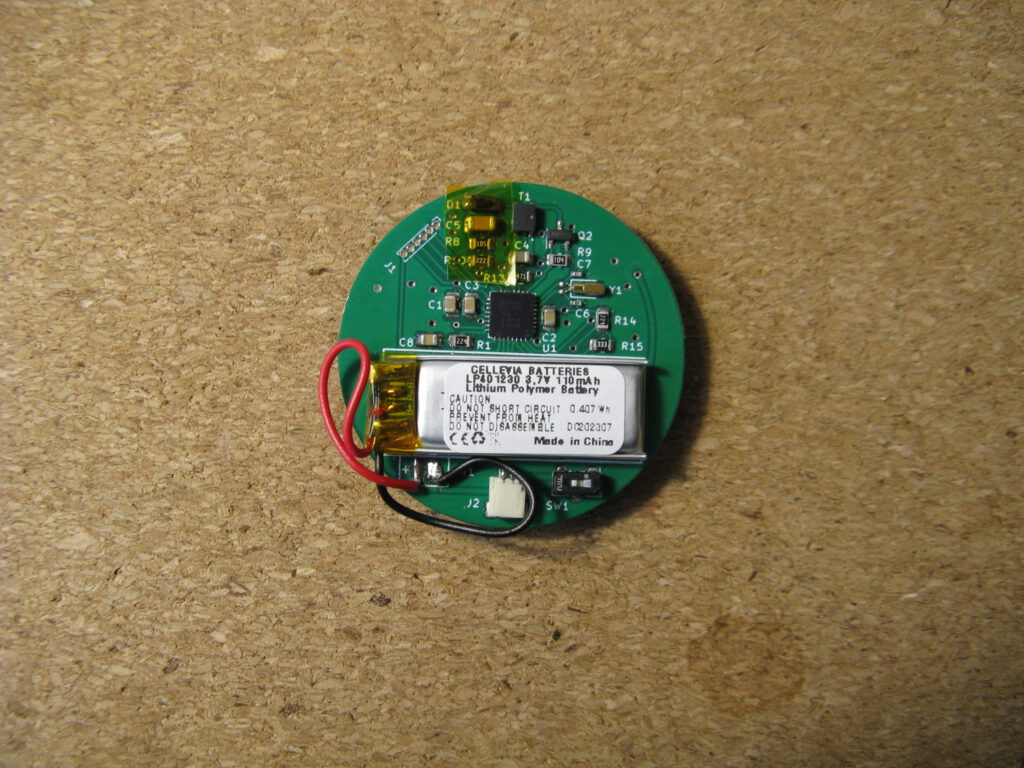
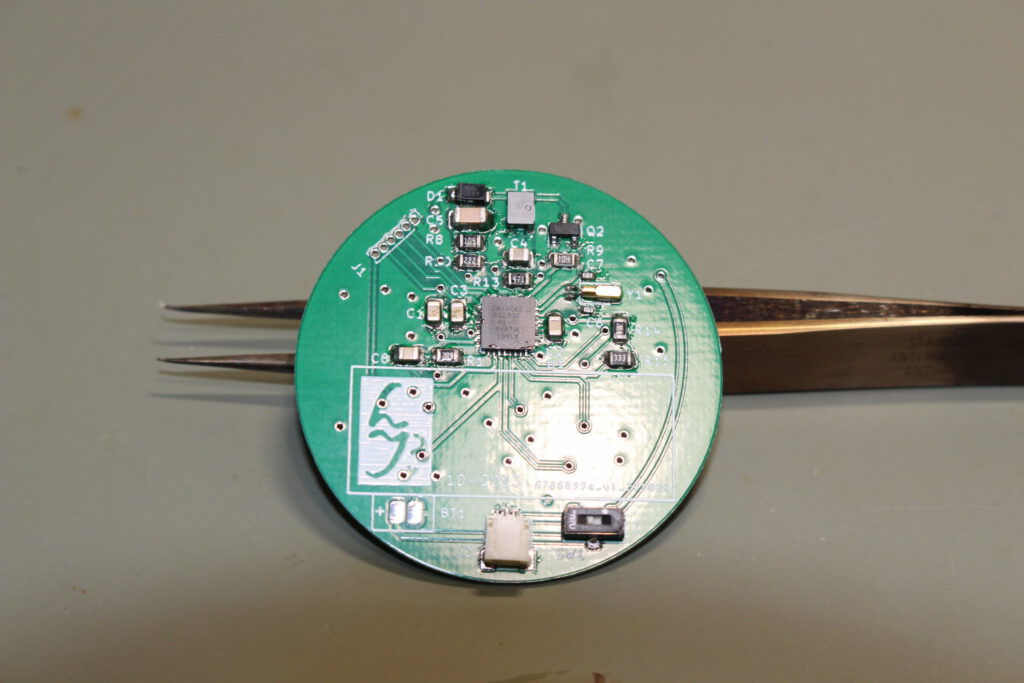
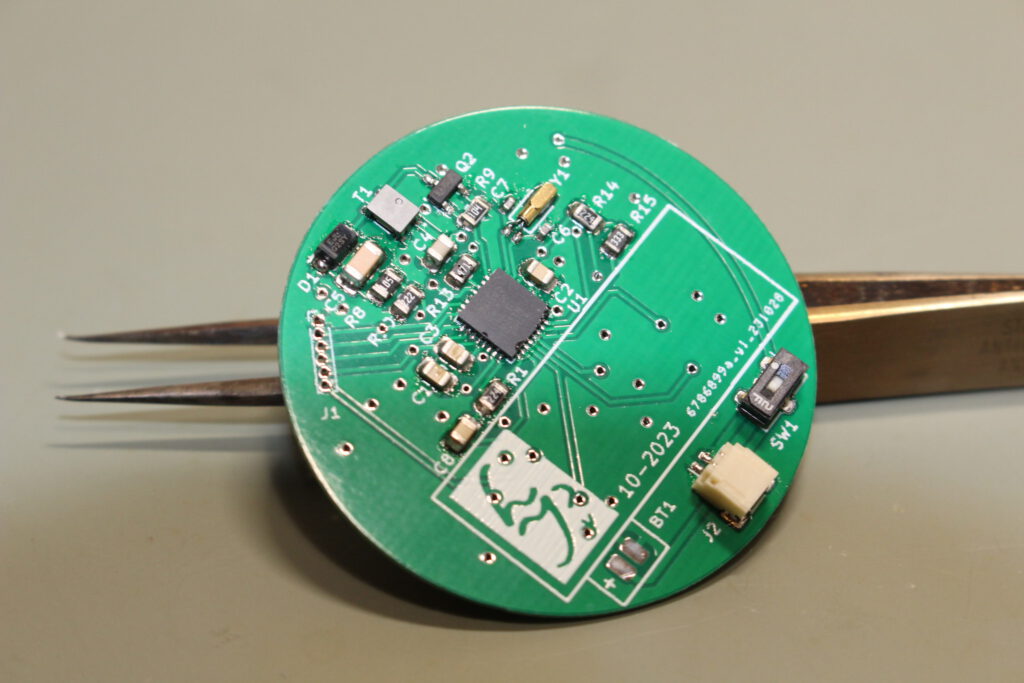
Front side of the circuitboard has the neon lamps, the back has the atmega48a that controls the watch, including the power supply for the neons. The supply is a boost converter, based around a small transformer originally meant for camera flashes.
Feel free to ask questions in the comments (no account needed / your e mail address will not be published) – I kept notes during this project.
Rests only to show a few more pictures of the watch:
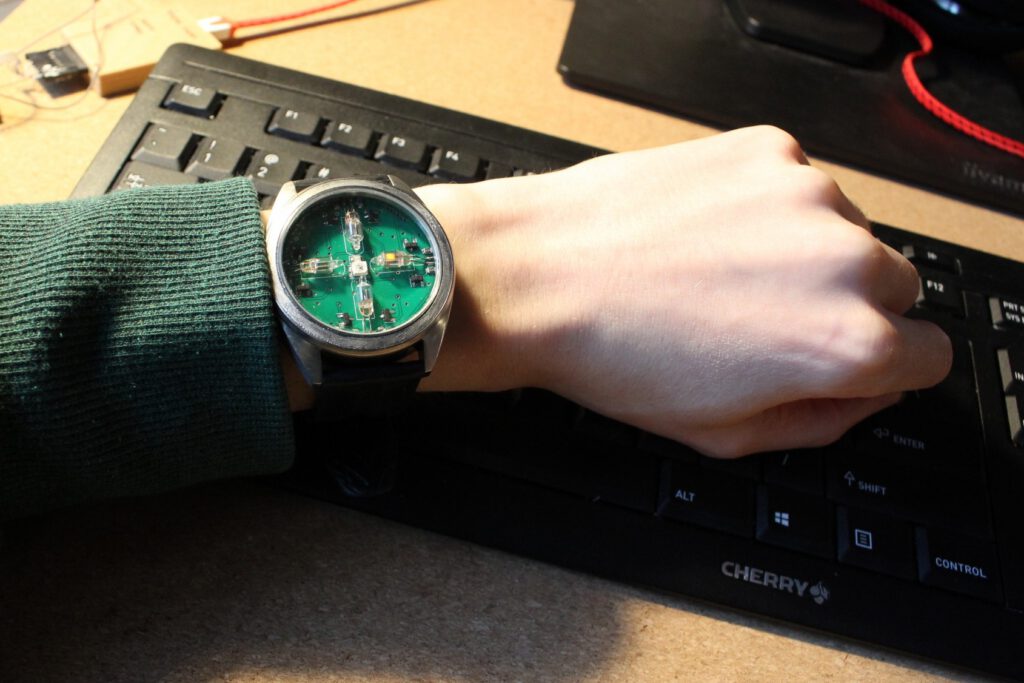
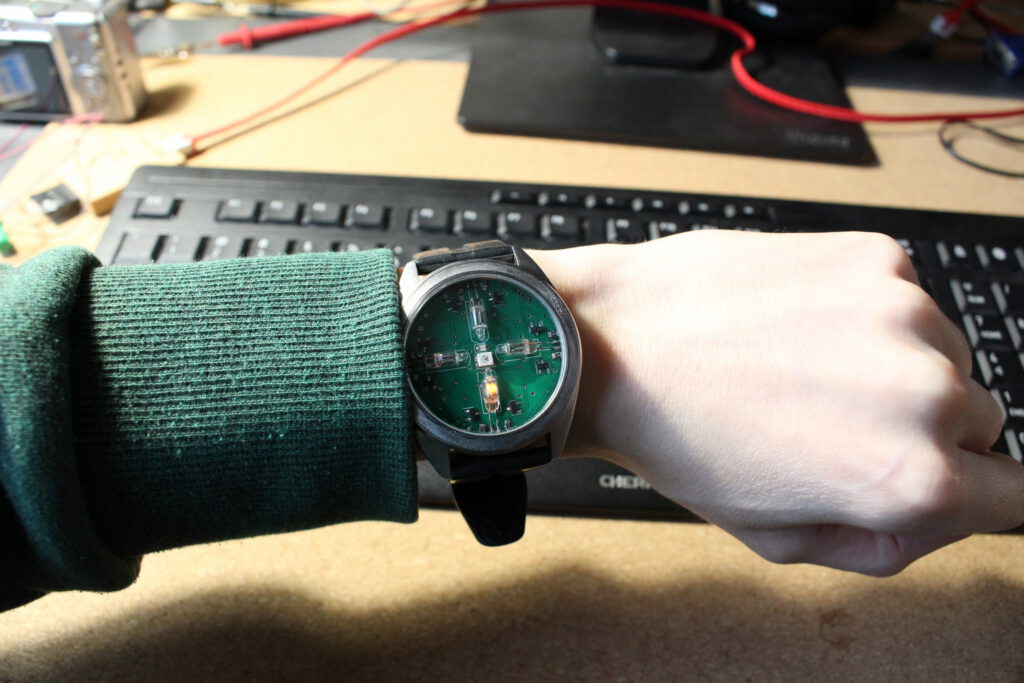
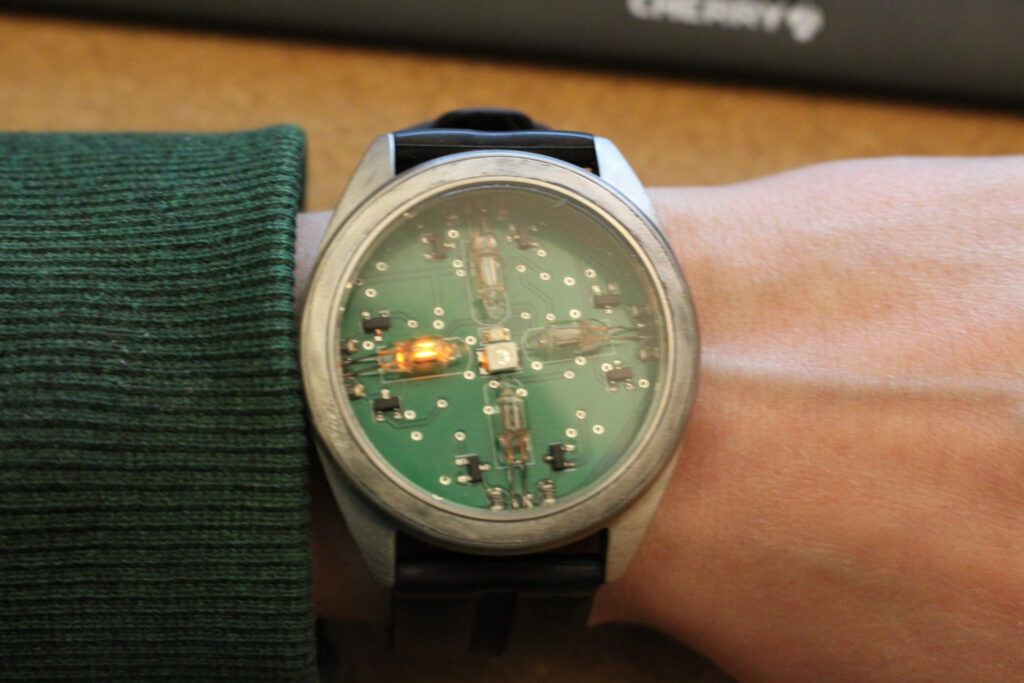
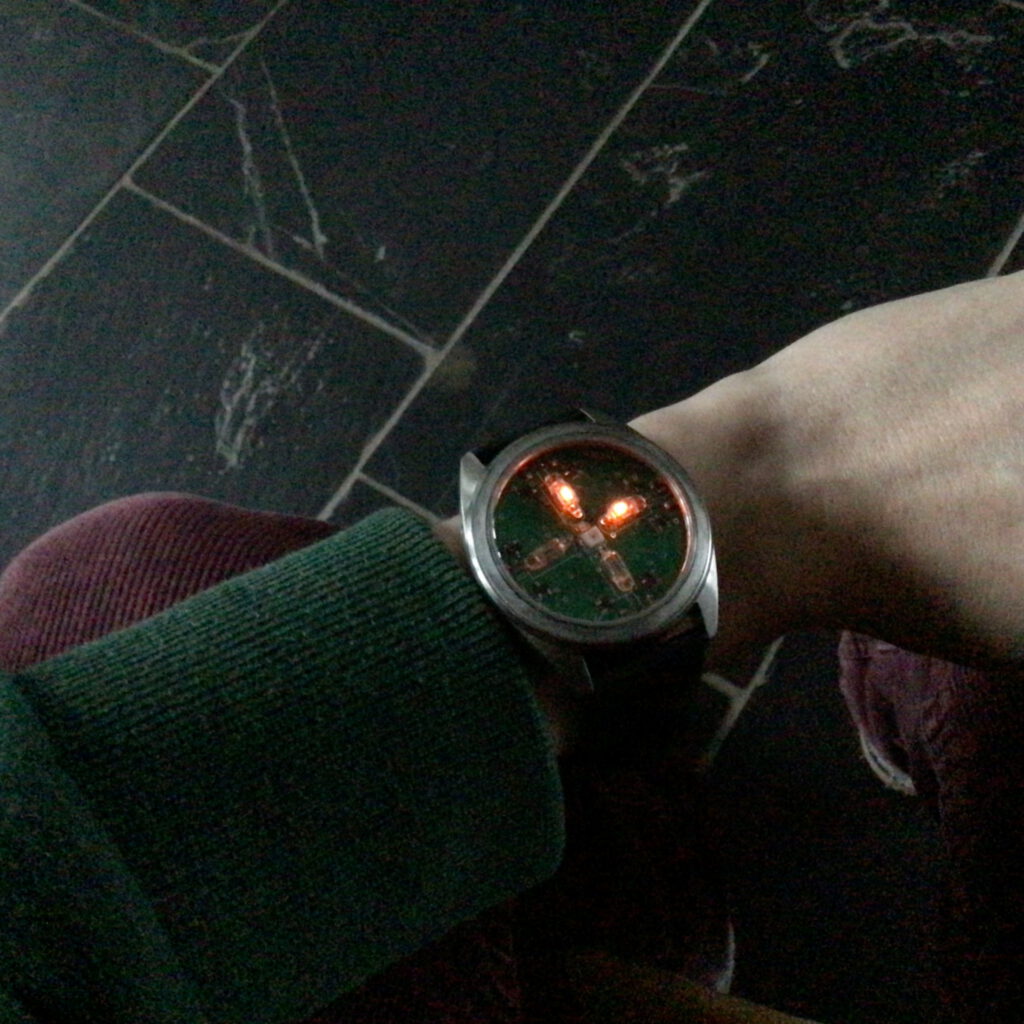
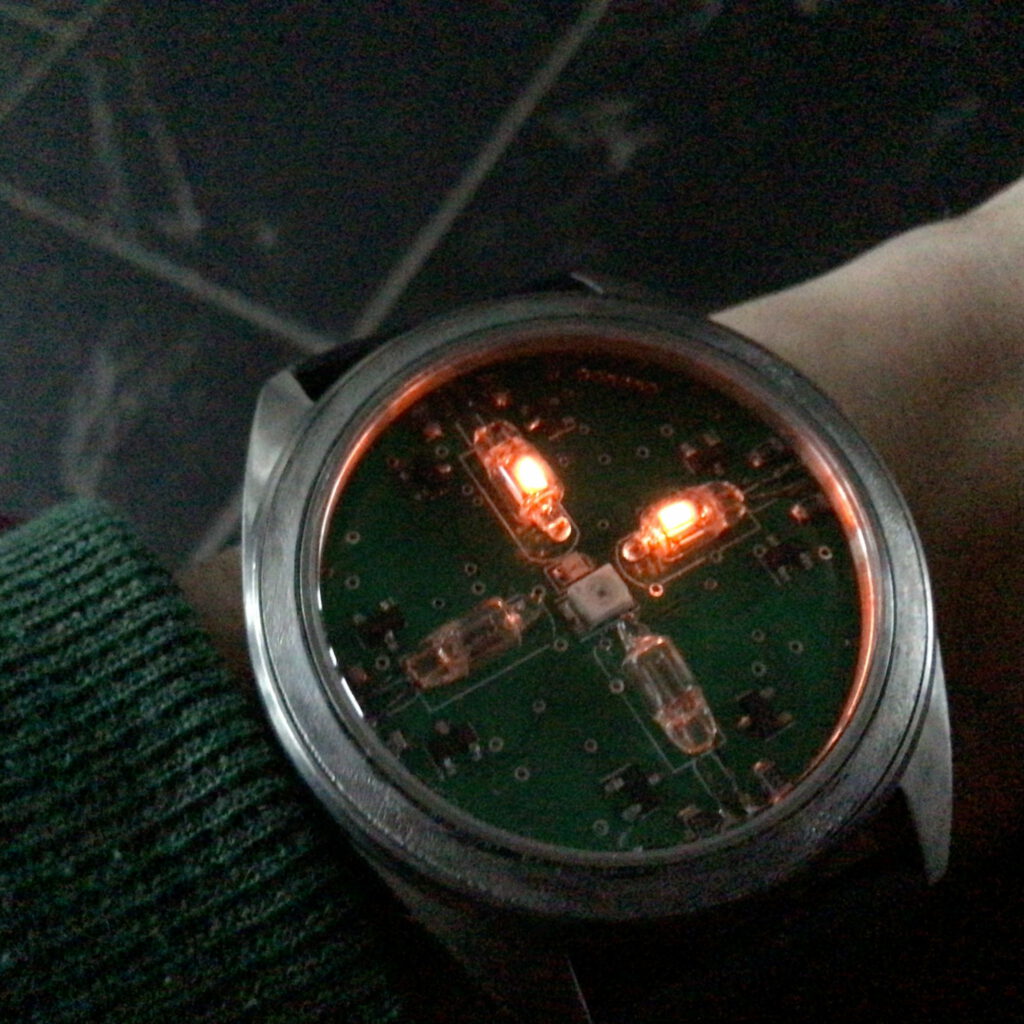
Just in time for the new year!
Footnotes:
- The light sensor is a SFH320 foto transistor, the white thingy in the middle of the board. ↩︎
- Light and shadow is used. So the watch also ‘spontaneously’ activates sometimes. ↩︎
- The battery is 110 mAh, the watch uses 0.6 mA when ‘idle’ and about 25 to 30 mA when showing the time (depending on battery voltage). Displaying the time takes about 16 seconds, so assuming that happens 60 times a day it takes 16 minutes in total and uses 8mAh. The other 23.8 hours the watch is ‘idle’ which takes about 15 mAh. Therefore the watch uses approximately 23 mAh every 24 hours, so theoretically it should last 4.7 natural days on a battery charge. ↩︎
- And a really, really, really tiny little transformer. ↩︎

Leave a Reply